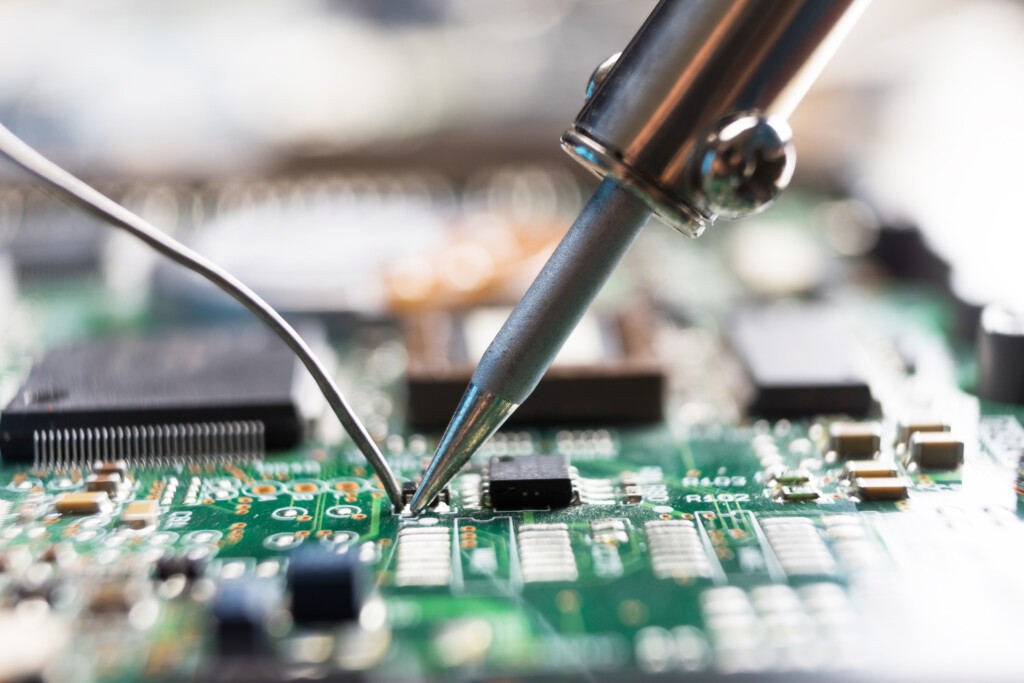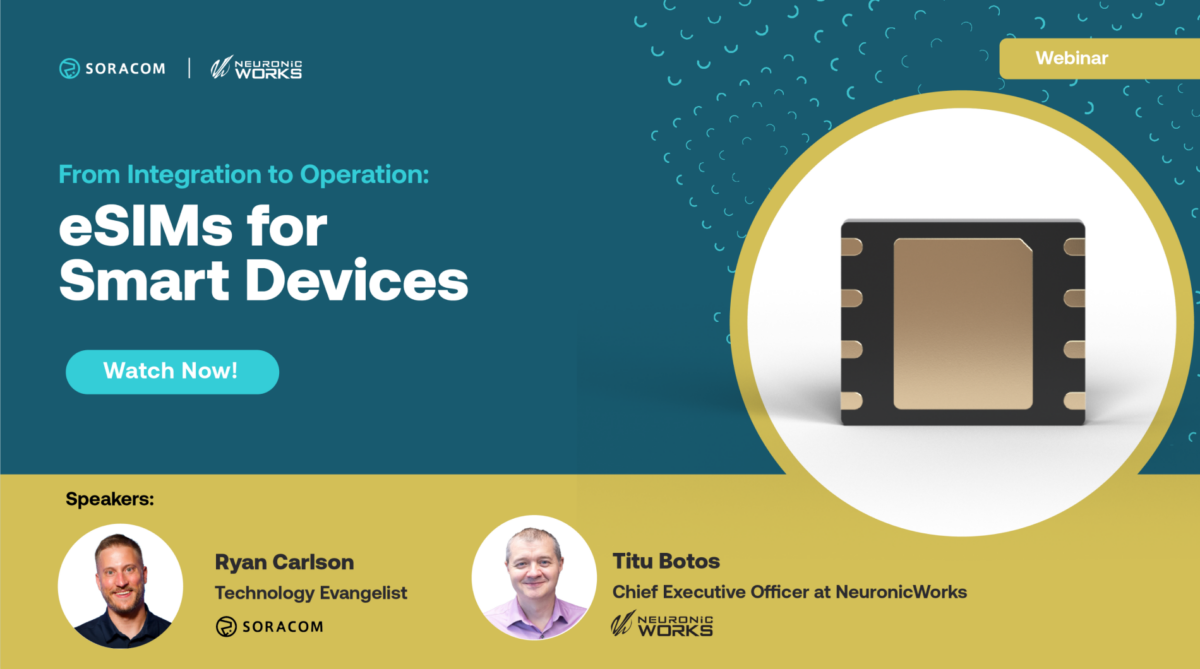What is an iSIM?

An essential part of any deployment, the IoT SIM card is one of the most versatile tools in a developer’s kit. IoT SIMs are used to store user information and connect devices to cellular networks. Though physical IoT SIMs already come in a variety of form factors to support virtually any IoT device available today, the advent of the integrated or iSIM is now opening up a world of possibilities.
This new, ultra-low form factor SIM is gaining a lot of attention in cellular connectivity circles, with Soracom co-founder and CTO Kenta Yasukawa telling the Smart Industry podcast that it will be an important part of the future of IoT. Since the iSIM is still an emerging technology, let’s take a closer look at what an iSIM actually is and what it could mean for IoT.
What is iSIM?
Much like the eSIM, the iSIM is a low-profile connectivity solution that embeds SIM functionality directly within the IoT device. Where eSIMs are soldered directly to a device’s board, iSIMs offer a system-on-chip (SOC) architecture with an onboard processor integrated into the modem of the device.
Integrating the SIM and all of its functionality into the device’s chipset offers the least obtrusive form-factor for IoT devices. This makes it a natural solution for applications like wearable devices, where space within a device comes at a premium.
Integrating the SIM into the cellular modem also allows hardware developers to eliminate one or more components from a device’s construction, reducing the space required for SIM functionality from several millimeters (a micro SIM measures 12mm x 15mm) to a fraction of a millimeter. This, in turn, adds a new layer of security as not only does it negate the ability to remove the physical SIM cards, but allows for additional levels of authentication as well.

The Benefits of an iSIM
Earlier this year, GSMA, 3GPP, TCA, and other organizations came to an agreement on a general iSIM standard, with the final standard as a viable solution for any cellular consumer device. By building off the advancements of eSIM, iSIM amplifies many of its benefits.
Whereas eSIM also integrates SIM functionality within an IoT device, iSIM does so without the need for a separate processor. This leads to a lower power requirement for these devices, but more than that, fewer components lead to a lower cost. Though the power and financial savings may be small at the individual device level, fleets that boast thousands of IoT devices could see more thrift.
“In the IoT space, cost is absolutely everything,” said Gary Waite, a systems architect for the GSMA. “That’s where iSIM really comes into play—the significant cost difference enables IoT applications that weren’t previously viable.”
The fact that the iSIM is significantly smaller than even the eSIM also opens up a wealth of opportunities for IoT devices that require low profiles. Items like wearable IoT devices or e-textiles are intrinsically low-profile in nature, and removing the need for internal components such as memory chips or controllers frees up space within a device for innovative design or more complex construction.
Security in A Small Package
iSIM technology benefits from the ground laid by the eSIM, and boasts many of the same accreditations of its forebears. In its exhaustive review of the technology, GSMA found that iSIM meets the same integrated eUICC security standard as embedded and reusable SIMs.
The iSIM’s unique construction, however, affords iSIMs several security advantages over other SIM forms. Replacing the removable SIM card dramatically reduces the potential for physical tampering, and the iSIMs secure location with the SoC locates the root of trust beneath an additional authentication layer.

A Path Toward the Future
The impressive potential of the iSIM is just beginning to emerge. While much of the world relies on more traditional SIM cards, the versatility of iSIM is allowing the technology to gain steam. Counterpoint Research predicts that nearly half a billion consumer electronics (chiefly smartphones) will support iSIM by 2025.
Soracom has been participating in the evolution of this emerging technology. By partnering with Sony Semiconductor Israel and Kigen, we were recently able to complete a proof of concept centered on connecting iSIM on Sony’s Altair ALT1250 Cellular IoT Chipset via Soracom’s connectivity solutions.
“We believe innovation for the next shift to billions of IoT devices will need foundational security that is easy to build with and manage at scale, which iSIM technology provides,” said Loic Bonvarlet, VP Product and Marketing at Kigen. “The combination of Kigen’s market-leading secure iSIM OS, provisioning services and market expertise, SONY’s iSIM chipsets and Soracom’s global connectivity will pave the way for power-efficient, compact, and secure-by-design IoT solutions.”
………………..
Got a question for Soracom? Whether you’re an existing customer, interested in learning more about our product and services, or want to learn about our Partner program – we’d love to hear from you!





